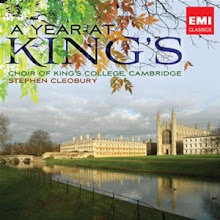I am listening to another CD that I got from Lammas Records. This one is Britten-Missa Brevis and Other Works For Treble Voices featuring Kieran White and the Boy Choristers of Wells Cathedral.
If I close my eyes I can pretend I’m sitting in those dimly lit stone walls and hearing the rich, clear voices of the boys echoing through the church.
Little Kieran White has a fine quality to his singing and he’s one of those singers who can roll his R’s with ease. That’s something I hear in the English cathedral choirs but not so much in the American ones. Apparently it's something that usually has to be learned as a child and they don't teach that here. I like it,though.
The Wells choir is as beautiful a choir as you could want. They do a variety of songs, starting with Britten’s Missa Brevis which is a really interesting mass. I especially love the Benedictus and the Agnus Dei with their dark mood.
Young Ned Berry sings When I Survey The Wondrous Cross, one of my favorites songs. The choir sings Ireland’s Ex Ore Innocentium, Faure’s Pie Jesu, A Grateful Heart by Mary Plumstead and several other good songs.
Most of the songs on this album are solos by Kieran, accompanied by piano or the organ. Be Still For The Presence of The Lord by Archer is one that I particularly like and so is If With All Your Hearts by Mendelssohn.
This is a 2004 release recorded mostly in Wells Cathedral by Lance Andrews, who has retired from Lammas Records. I can’t think of a finer career than to visit cathedrals hearing and recording boys singing. It would be an enjoyable thing to do for a living as well as saving some wonderful music from disappearing forever.
It is interesting that since 1994 Wells Cathedral has a choir of eighteen girls as well as their boys choir. This CD is done by the boys.
A bit of history: The wells, which gave the city its name, are natural springs which can be found in the garden of the Bishop's Palace, including the holy well of St. Andrew.
In 909 the church of St. Andrew became the first Wells Cathedral. By 1180 the foundations of a new church in the Gothic style were being laid to the north of the old one.
In 1477 Bishop Robert Stillington embarked on a complete rebuilding of the chapel on a grand scale. The foundations of this cruciform building are what can be seen today in the Camery garden. This grand chapel did not last long and was blown up with gunpowder in 1552 because Edward VI had abolished Chantry chapels in the height of Reformation zeal.
Wednesday, November 25, 2009
Subscribe to:
Post Comments (Atom)













No comments:
Post a Comment